The countryside around here, especially to the north, has lots of gently rolling hills sweeping down to the river plains along the Guadalquivir River. And there are a few orange “groves” and the occasional olive tree! I had NO idea that the world consumed as many oranges. Apparently, Spain produced over 3.3 million metric tonnes of the fruit during the 2019/2020 season. Tangerines and lemons made up another 2 million tonnes between them.
Spain produces on average about 44% of the world’s supply of olive oil, twice as much as Italy and four times as much as Greece. Spanish olive oil production allegedly works out at an impressive 1.2 million tonnes of olive oil annually – enough to fill about 400 Olympic size swimming pools! And I can only find 10 such pools in the UK, so we would need to use EU pools and probably a few US ones too in order to contain all the Spanish oil!
I wanted to go to Hornacheulos a remote town in the hills and on to the Embalse del Retortilla. After driving cross country through miles and miles of oranges and olives we wound our way to the top of Hornacheulos and settled down for a coffee and loo stop at the first reasonable looking bar. (Did I mention that ALL public toilets throughout Spain have been summarily closed as a response to the Covid pandemic. Useful!)
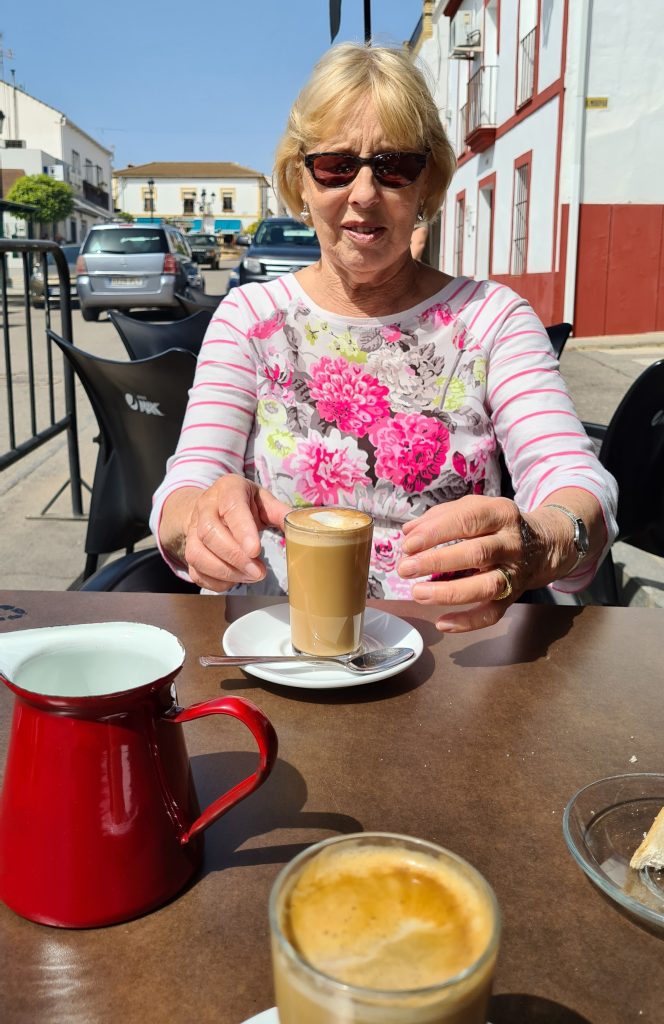
… and why on earth do they insist on serving hot coffee in glasses with no handles? But at least we seem to have cracked the jarra of hot water – at least 25% of the time!
The town, like many others in the area, appeared to be “asleep”. There are very few people on the move – and I think we might be the only tourists outside Córdoba. Most of the houses seemed very locked up – but it was morning. Maybe the locals all come out to party at dusk. Here we are in the centre of the old town outside the town hall – all alone!
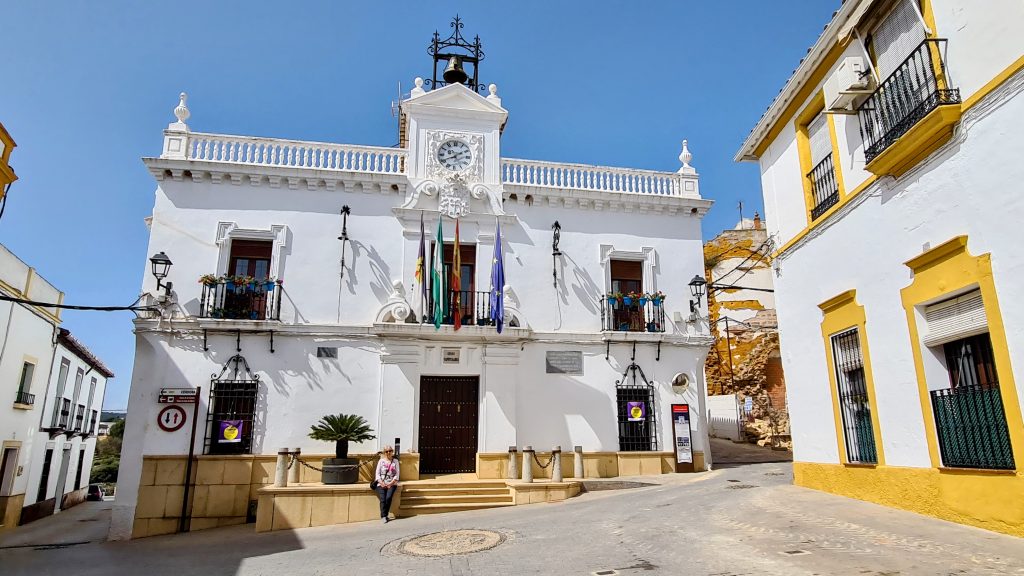
The route to the reservoir was characteristically zig-zag ending with an 18 km drive up what was essentially a single track road with occasional wide bits. Fortunately, we met just two cars and had to pull off into the bushes to let another past us. In the end, the reservoir was quite inaccessible. The only “mirador” was occupied by a family of very noisy Spaniards. So we visited, photographed and retreated.
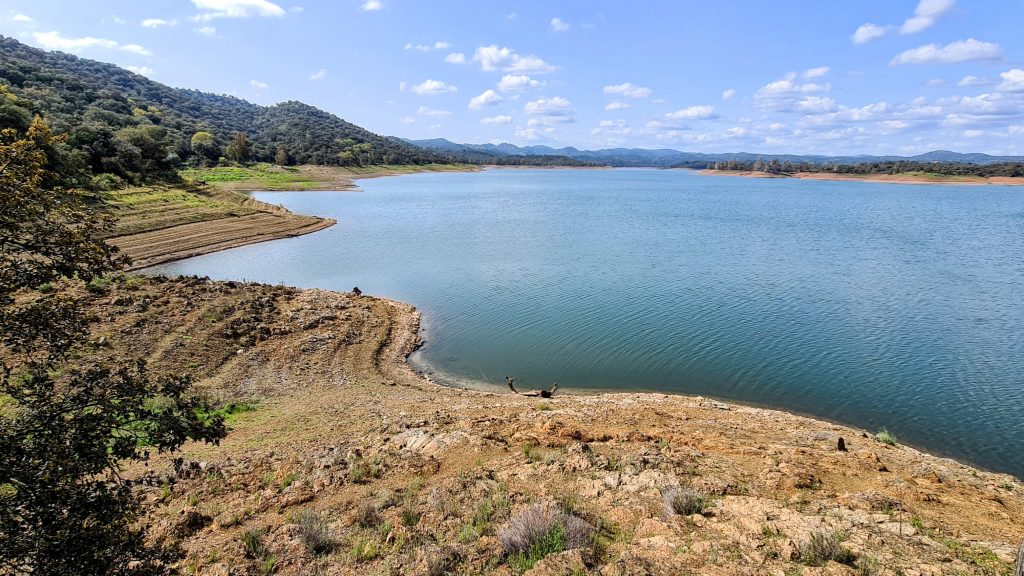
We’ve started to identify a number of characteristics of the locals. I’ve just noted their “loudness”. In any gathering of more than one person, they communicate largely by shouting (at each other and over each other). The children are just the same. I guess they are taught this habit at school.
Another behaviour which I’ve commented on before is their littering habits. Along the road by the reservoir there was evidence of many picnics. Each event making a new stratum on the verges. An excavation of one of these middens could make an interesting project for an archaeological student. There was even a mattress forming a significant layer at one point. There must be easier places to dispose of redundant bed parts than 18 km up a mountain trail! Indeed, the local authorities had thoughtfully provided massive bins – but just not close to the picnic spots – or at least, not close enough! Please note, I’m not saying this problem doesn’t exist at home!
Before I finish this rant, I would also like to record another annoying habit. On any given road, a Spanish driver loves to be less than 2 metres from your rear bumper. They rush up behind and formate (is that a word?) on your tail and stick there like glue, refusing to overtake. Very annoying behaviour, especially when you are a little unsure about which turn to take. Are they saving fuel by driving so close? Does it reduce air resistance?
Enough.
The next day, it’s Glenda’s choice of destination. She wisely chose a castle and a set of excavated ruins for our day out.
Approaching the town of Almodóvar del Rio the castle is clearly visible from miles away through the orange plantations.
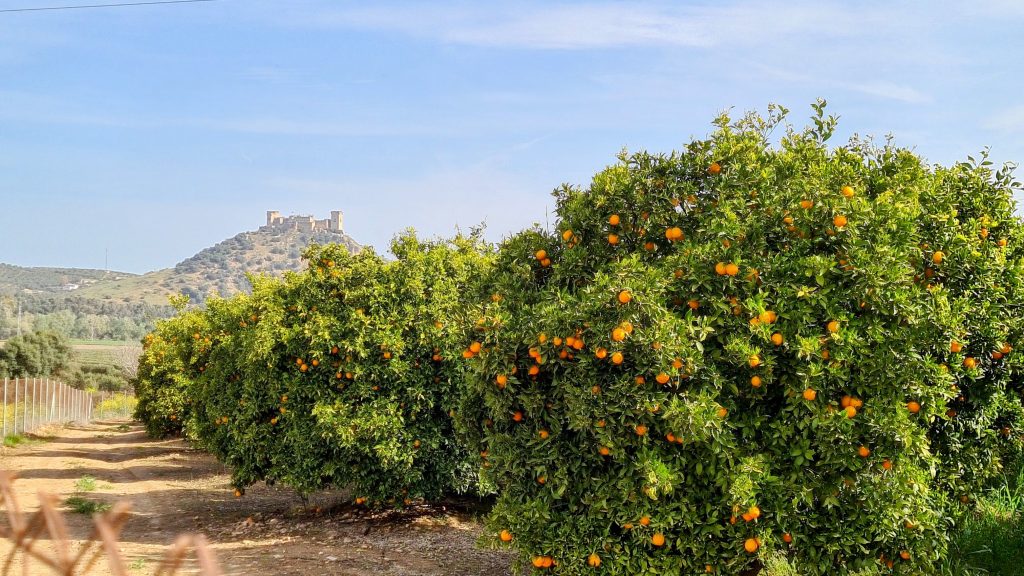
It certainly looks an impressively impregnable fortress with the white village spilling down the slope outside the castle walls. We were later to be informed that it was the only castle in the region which had never fallen to enemy attack (although several others castles appear to make the same claim!)

There’s a large, free carpark below the castle – just like the tourist attractions in Devon – not! We saved 2€ by electing to walk up the hill rather than take the bus. Good exercise as well as good economy!
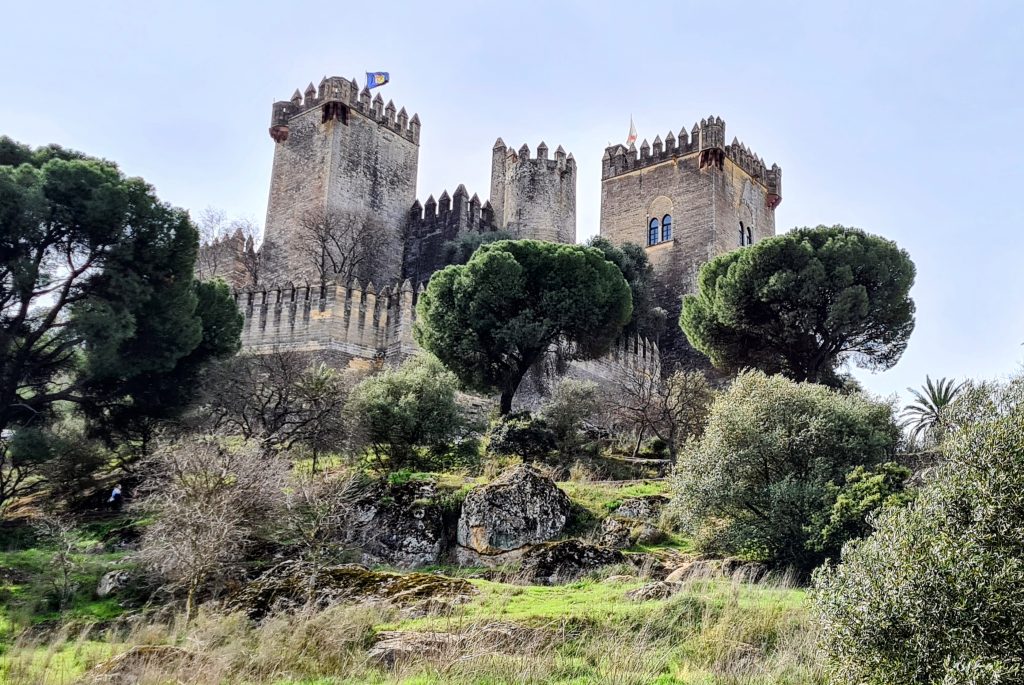
We arrived at the castle entrance just behind a bus-load of typically noisy Spaniards. After five minutes of patient queuing we realised they were waiting for a tour guide with their tickets to arrive. So we barged past them taking with us a number of independent visitors who had been waiting with us. Good idea to get ahead!
The castle had been extensively and sensitively rebuilt in the early twentieth century by the then owner, the Count of Torralva, an ancestor of the current owner. Apparently it took 800 workers 36 years to complete the restoration. Sadly, the count didn’t live to see its completion, but he saved the castle for future generations.
A fascinating place to visit.
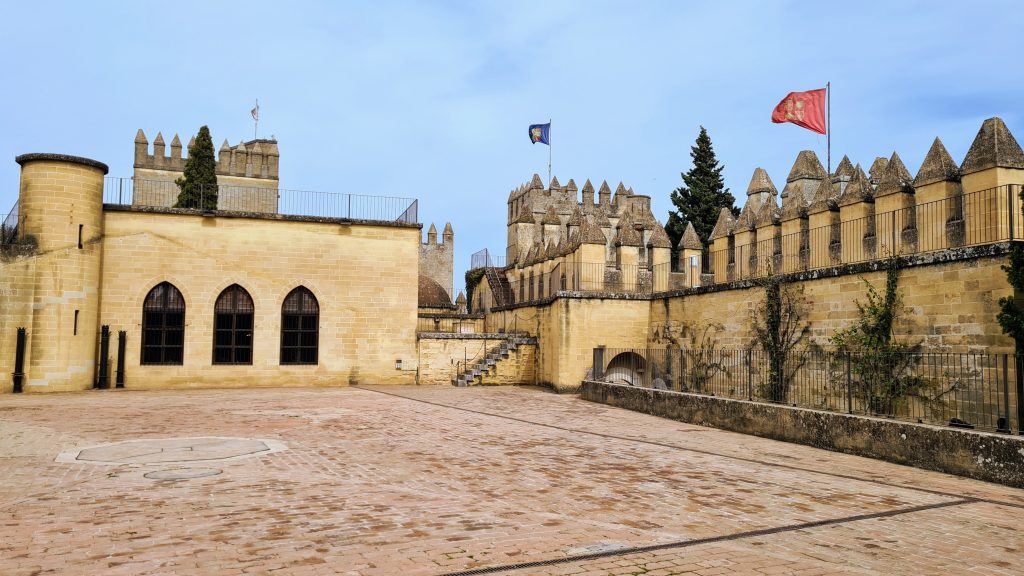
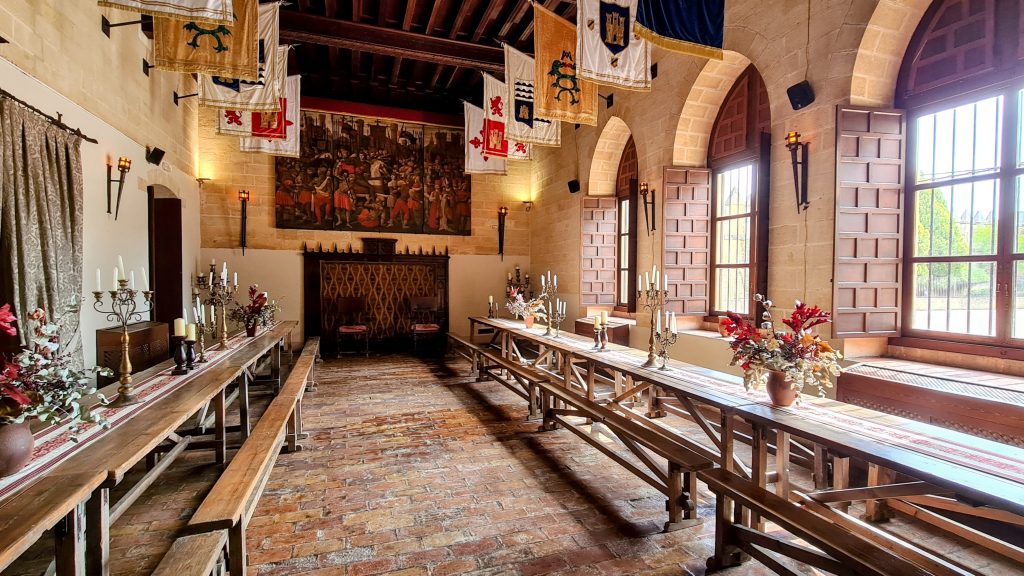
The view from the top of the tallest tower…
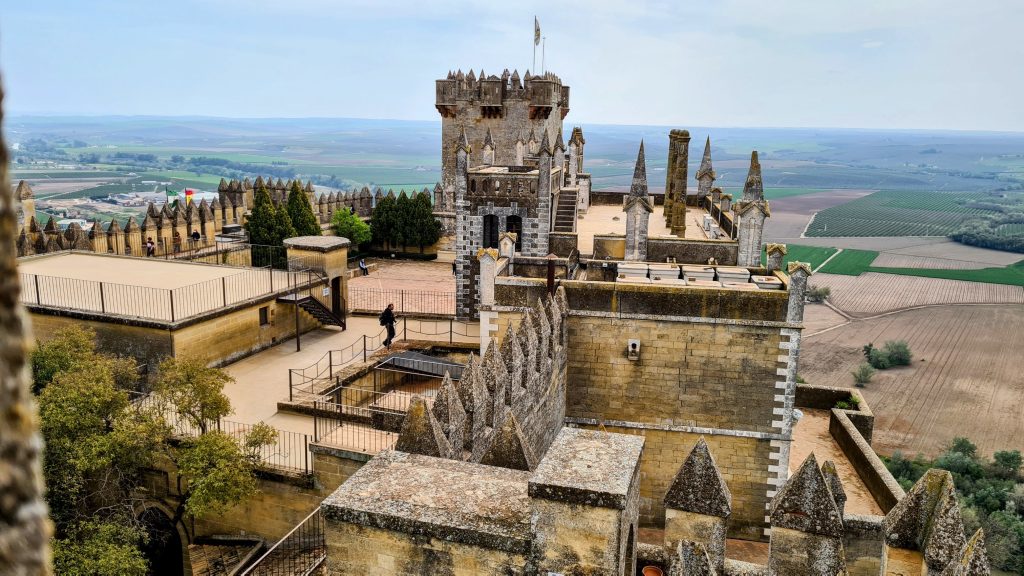
… and the town below…

There was even a princess waiting to be rescued by someone with a long ladder…
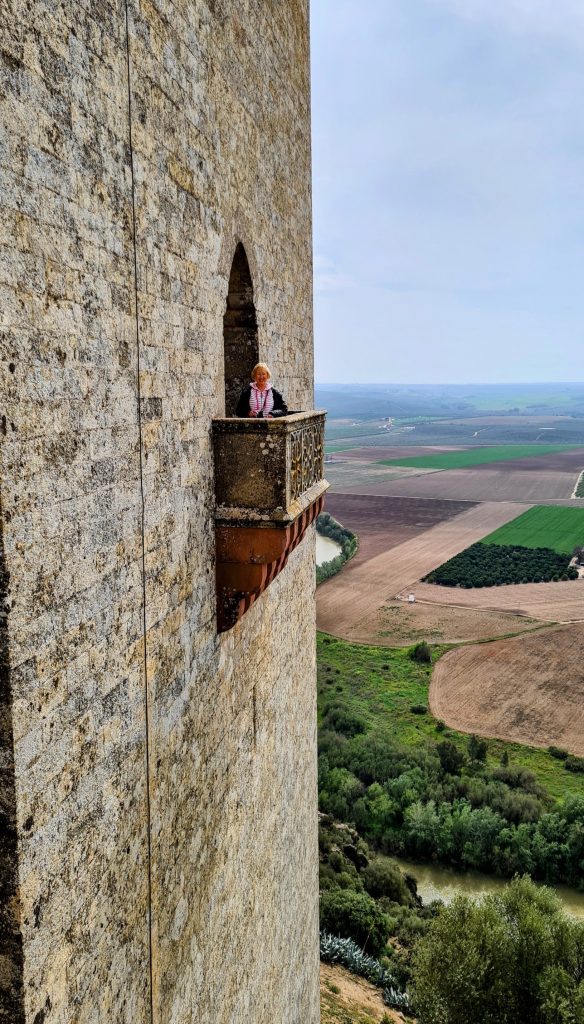
A VERY long ladder!
Next stop was the excavated remains of the Caliphate City of Medina Azahara. (Definitely NOT Roman!) It was a fortified palace-city on the western outskirts of Córdoba built in the 10th century.
About 10 hectares of the city which covers a total of 112 hectares have been excavated so far. However, it’s early closing on Sunday so we had to be satisfied with a view through the fence!
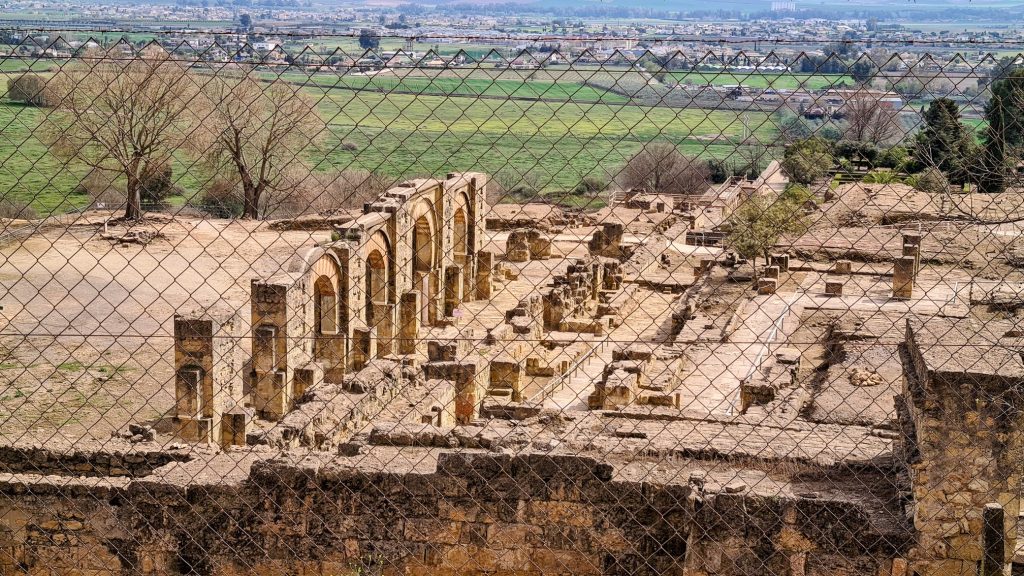
Sunday? We haven’t yet found a suitable spot for lunch! In a moment of rash indecision, we ended up skirting the hills to the northwest of Córdoba. More tortuous, narrow roads with exciting prospects of sliding down the mountainside wherever there was a gap in the concrete bollards beside the edge of the road.
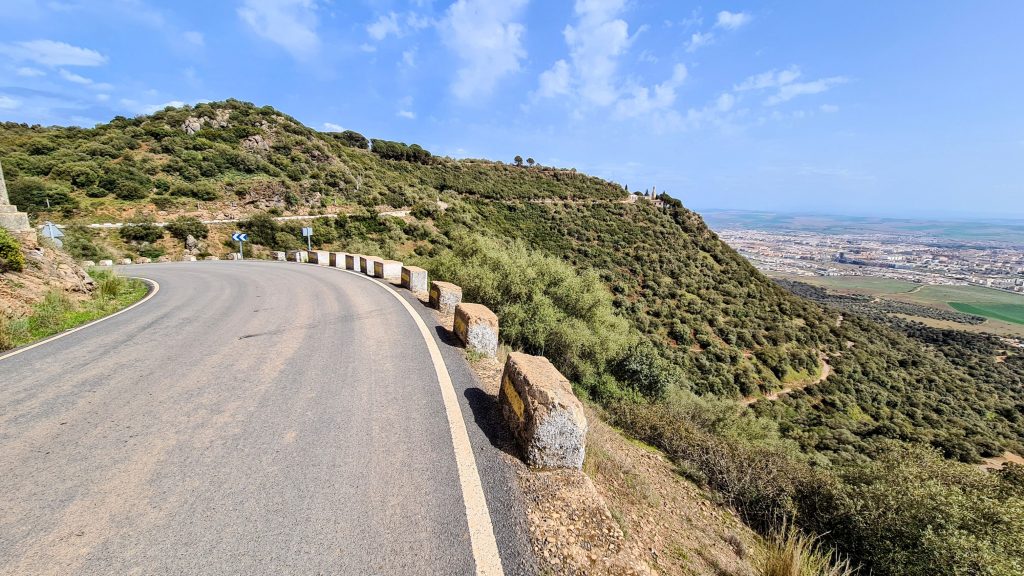
And at 50m intervals there were big crosses at which to pray for safe passge to the next cross!
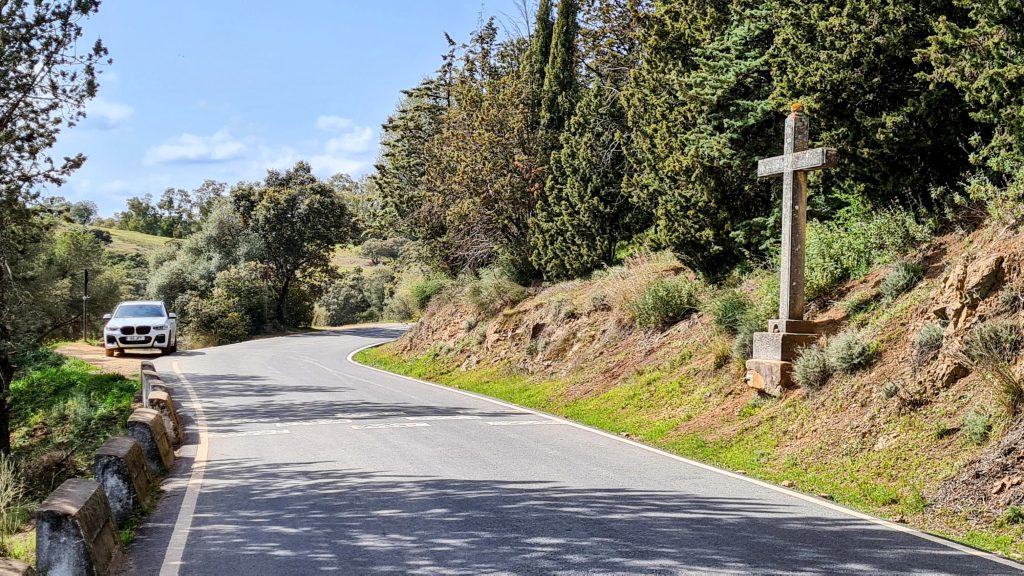
After what seemed like ages – it takes a very long time to get anywhere on these roads – we decided to turn right and head back downhill towards Córdoba. As we passed the tiny village of Santa Domingo we found cars abandoned in every possible parking space. Something was going on! A car in front of us pulled out of a space and we grabbed it. Right outside the Restaurant Santo Domingo. Heaving. So, Sunday lunch is still possible, but after a 20 minute wait just to see the menu we gave up and headed home before it got dark. According to the signs, the village boasted a golf course, but where it was located on the hilly terrain is anyone’s guess!
Over the next couple of days we visited a number of towns and villages in the area. The weather was showery and not conducive to much exploration on foot. We almost got stuck in one street where we had to make a sharp right angled turn to the right. I lost count but it was probably a 93 point turn. But we didn’t hit any of the walls. The guy behind swept round in one go, but he did have a very little, very beaten up vehicle! And he probably knew where he was going!
In Santaella, the village a few kms south of our base, we found one restaurant (deserted) and three bars (each with two locals ensconced – after 30 minutes the locals all moved to a different bar but no truly new customers arrived – apart from us!)
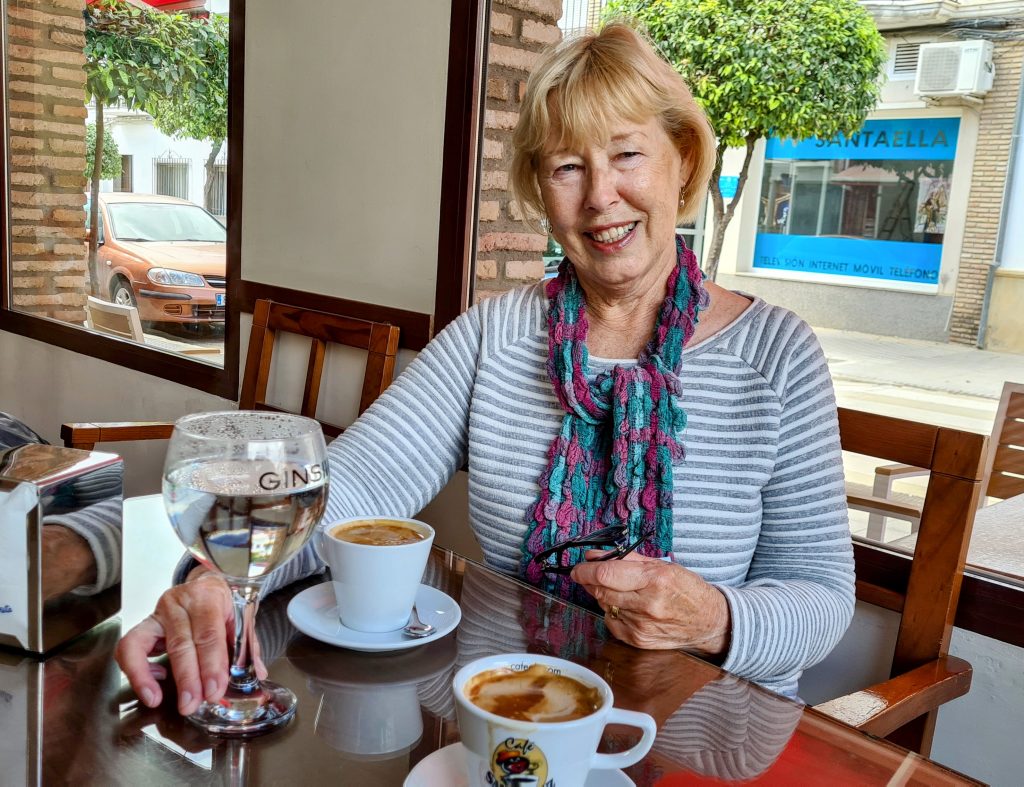
… and who said we had the “jug of hot water” thing cracked? Not easy to pour from this!
In front of the town hall we found this sign…
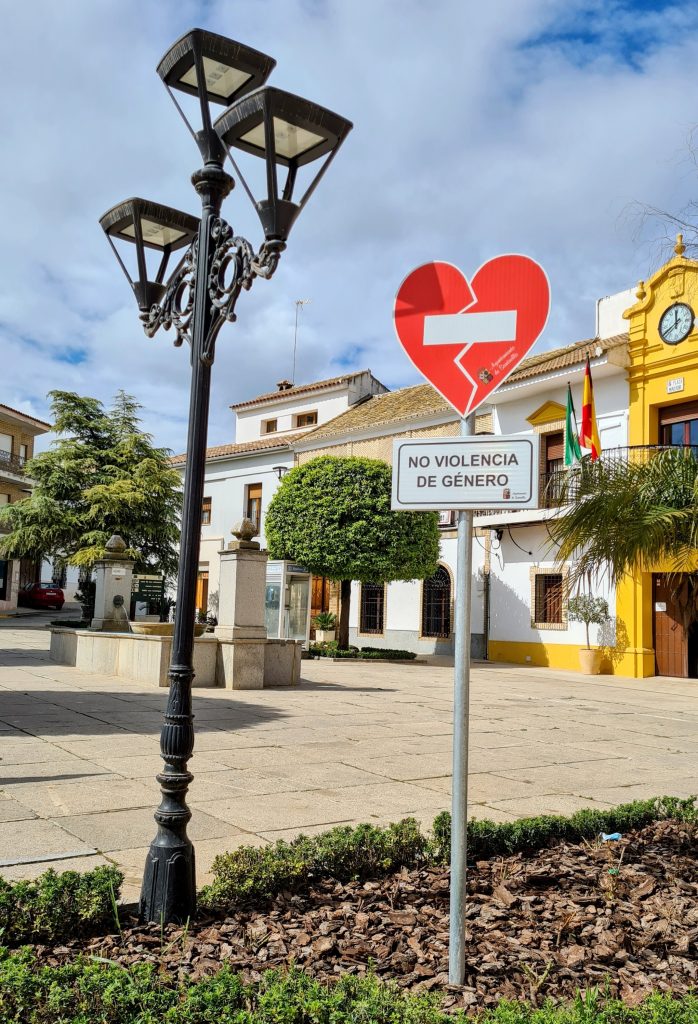
… “No gender violence”! That’s a first!
Finally, here’s a puzzle. Any guesses what these hinged wooden contraptions were for.
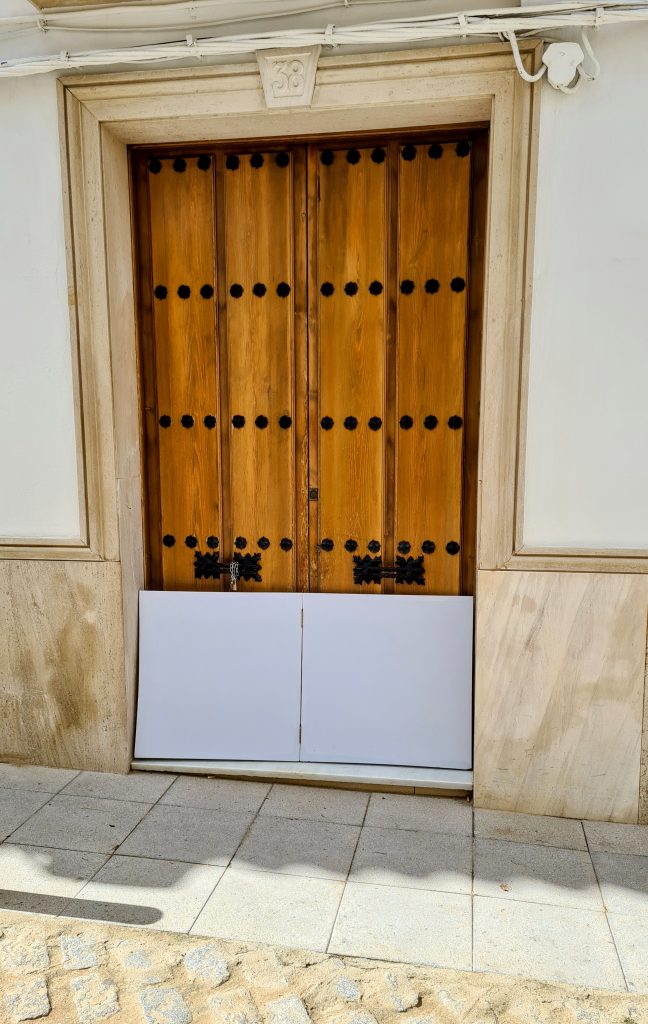
On the main street through town about 50% of the houses had them! I’d love to hear your suggestions.
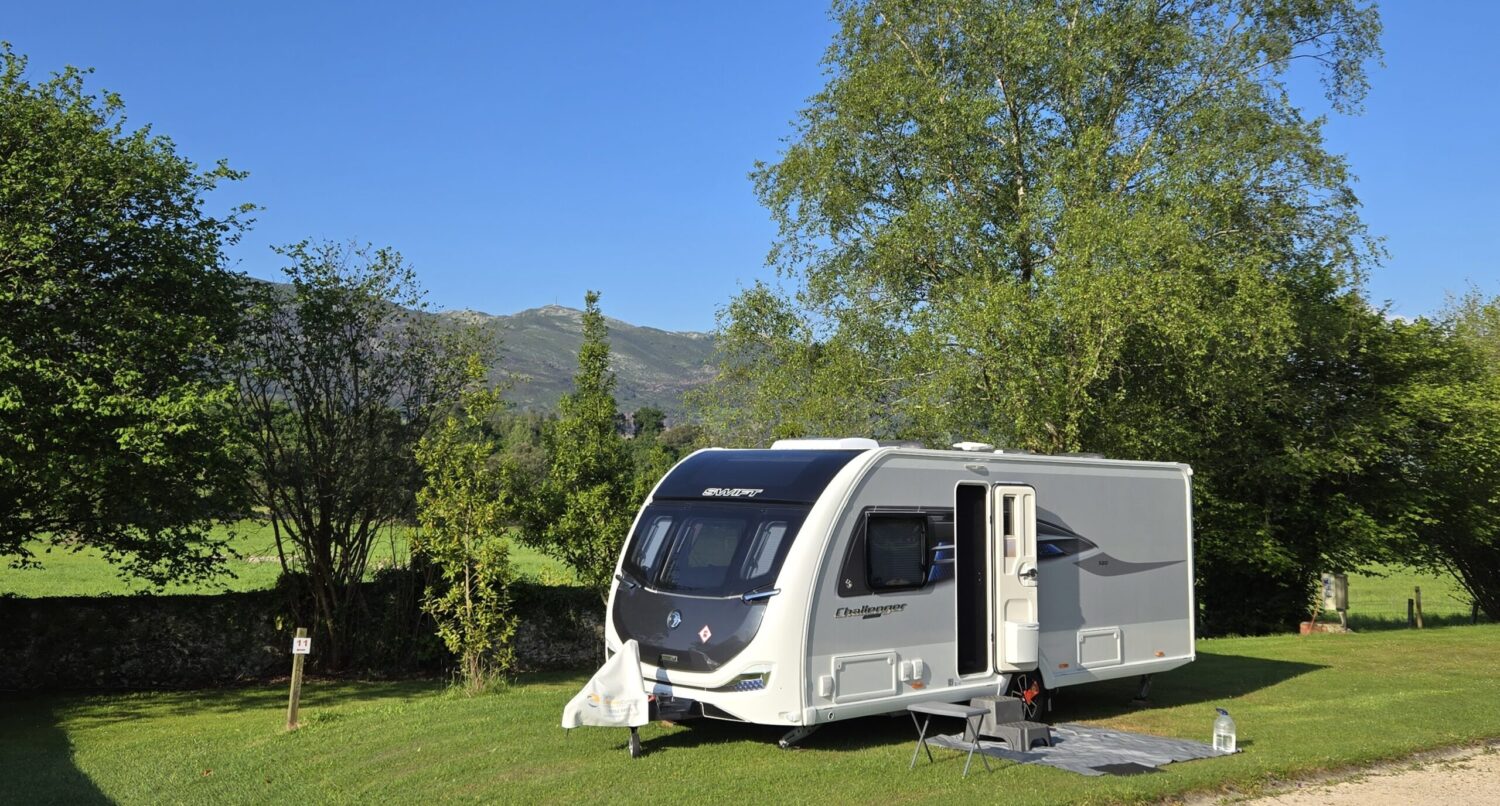
If it was the UK I might have thought a flood guard. Otherwise could be draught excluder to keep the Sahara dust out. Thanks for this latest instalment.
I think it is a “dog wee guard”…take offable and washable????? To save the beautiful, old, woooden door underneath???
XxxxxxX